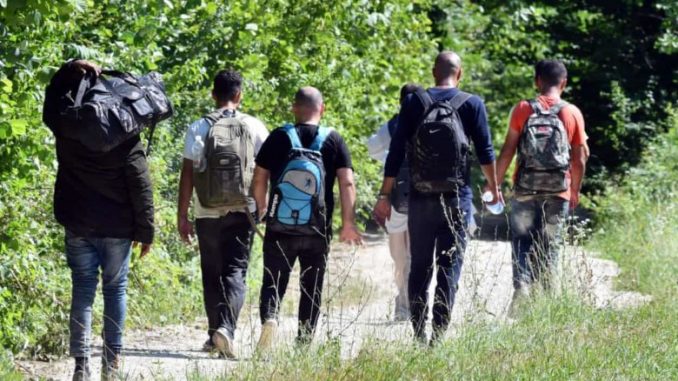From Idomeni, migrants attempt to cross the border to Macedonia. At night, groups of people attempt to climb on commercial trains as blind passengers or they pierce holes in the wall along the border at night, online portal ‘InfoMigrants’ reports.
“They jump on the train at the risk of being electrocuted by touching the high-voltage cables,” said a train driver, who recently discovered 42 stowaways on board.
However, of those that get through, most are stopped by the Macedonia patrols and sent back to Greece. That was the case with Pakistani migrant Musa, who managed to cross to Macedonia through a hole drilled in the border wall. But he was caught and says he was first “beaten by the Macedonia police, then by the Greeks” when he was returned across the border, ‘InfoMigrants’ notes.
Some who do not manage to cross the border decide to walk 70 kilometers to reach the northern Greek city of Thessaloniki instead. From there, they hope to travel onwards.
Abdullah had been camping in a dilapidated building near the train station in Idomeni, Greece, for several days. The 20-year-old Syrian is waiting for the right moment to sneak on a train and travel to western Europe via the so-called Balkan route.
“I will do everything to cross the border,” Abdullah said.
According to the online portal, he is not the only one. Entire families spend the night along the railway lines or in abandoned wagons near the train station. As soon as Greek police patrols appear, they disperse into nearby fields.
The small Greek village of Idomeni lies on the border between Greece and Macedonia. In 2015, hundreds of thousands of migrants and refugees crossed this area – also referred to as a “no man’s land” – on foot to Europe. To stem the large numbers of migrant arrivals to Europe, the EU-Turkey deal was put in place, and in March 2016, EU countries locked their borders and Greece built a wall along its northern border, online portal reports.
Idomeni was Greece’s largest refugee hotspot at the time and the makeshift camp there hosted more than 13,000 people at its peak, until the camp was evacuated by authorities in May 2016. Migrants and refugees were forcibly relocated to alternative accommodation in Greece; and tents were removed with bulldozers.
Now, Idomeni is becoming a major transfer point for migrants and refugees once again.
“Every day nearly 200 people arrive in Idomeni,” Lazaros Oulis, who lives near the border crossing, said.
“Some have pitched tents in the fields. We are afraid that Idomeni will become a camp again,” he said, ‘InfoMigrants’ reports.




Comments are closed for this post.